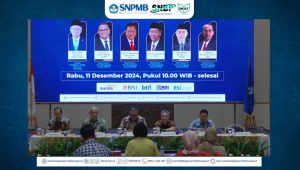Mobile applications develop along with smartphone development. Indonesia has more than 100 million active smartphone users and is the fourth-largest smartphone user country in the world after China, the USA, and India. Smartphones are defined as smartphones that have capabilities such as computers. Students use smartphones and their applications to access information sources in the library, view tutorial videos, browse sources from the internet, record material provided by lecturers, record assignments, discuss with friends, and translate lecture material. This article intends to explore the use of mobile applications used by Universitas Airlangga Library diploma students (UNAIR) in supporting their learning process.
A survey was conducted on 132 Diploma 3 Library students, Faculty of Vocational Studies UNAIR for two weeks in February 2019. Furthermore, in-depth interviews were also conducted with several students to find out more information. All respondents used smartphones with various brands. The smartphone brands that are widely used included Samsung (24.4%), Oppo (22.8%), iPhone (12.6%), Xiaomi (12.6%), Vivo (9.4%), and Asus (6.3%).
The number of mobile apps installed by students in the smartphone also varies among them, 35.9% of students installed 11-20 applications in smartphones, 31.3% of students installed only 1-10 applications, and 12.2% of students installed over 30 applications, as well as only 9.9% installed 21-30 applications. The number of applications installed in one smartphone certainly has a variety of functions. The motive is to support studies and daily activities such as supporting hobbies, making life easier, and other functions.
Popular Mobile Apps Among Students
From many installed applications, not all of them support their studies, here are ten applications which support studies of UNAIR Library D3 Program students in Faculty of Vocational Studies. There were 91.7% of Diploma students using Whatsapp application as a medium of personal communication between students and lecturers and sending small-sized files. Then the second is Line application. 73.5% of students choose to use Line to communicate with groups, especially in committee activities and group work. They chose Line because of its many features such as voting for meeting purposes, easy to find stored files, being able to make notifications, notes and album folders availability, timelines that contain updated contacts and a larger number of group members than Whatsapp.
The third is Gmail with 68.5% of users. Gmail is used to send task files during lectures. The fourth is Google Chrome, which is the most used browser by students. Students use the chrome mobile application when they search for information using a smartphone because it is easy to use and simple. The fifth, Facebook mobile applications as the students also have an official FB group “New Library Group,” where members included lecturers, students, and education staff for easy communication. All students used this application to
communicate with faculty members and friends. Students use Facebook when they want to access assignments from lecturers, upload assignments, and get information related to lectures.
The sixth, Google Translate is used to understand English-language material considering the references provided by the lecturers are mostly in English. The seventh, Youtube, students use YouTube to search for video tutorials related to lecture material such as how to install the library software slim, learn English grammar, Corel draw tutorial, cataloging tutorials, design studies, MySQL database tutorials, and presentation design with powerpoint. Furthermore, YouTube is also used to upload lecture assignments. The eighth application is WPS Office which is used to create, edit, store, open and share documents in various formats such as word, pdf, presentation, spreadsheet, and memo and doc scanners.
The ninth is the KBBI application (Indonesian Dictionary), which is used to assist in the process of scientific writing during college. Finally, the English dictionary application (Kamusku) is commonly used to translate words or sentences from Indonesian to English and vice versa offline.
Out of ten applications that are widely used by UNAIR Diploma students, they are then grouped into four categories, namely applications for sharing and communication: Whatsapp, line, Facebook, and Gmail. Then the second category is the application to search the content using chrome for text-based information and youtube for video content. The third application category is translate using Google translate, Kamusku, and KBBI, social. The last category is editing documents using WPS office. From the ten applications, only two applications come from local/domestic developers, Kamusku and KBBI, while other applications are from international developers.
Author: Nove E. Variant Anna
Details of research available at:
https://digitalcommons.unl.edu/libphilprac/2607/
Nove E, Variant Anna, (2019), Top 10 Mobile Apps to Support LIS Students’ Learning. Library Philosophy and Practice, May 2019.









